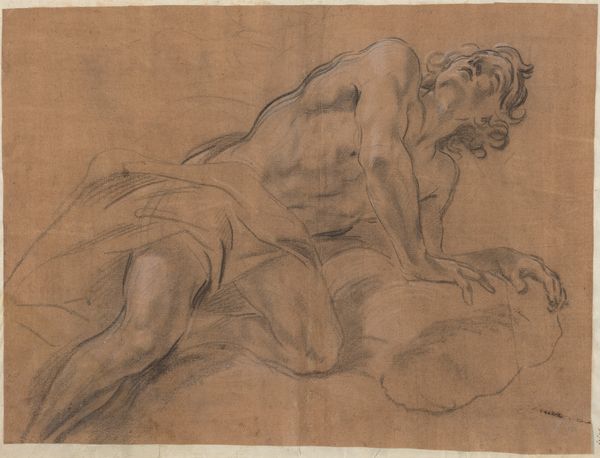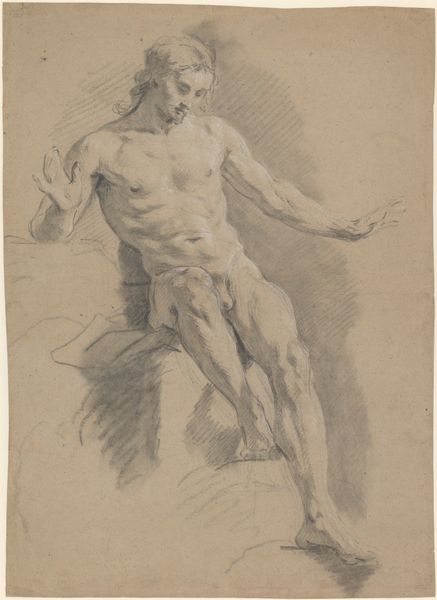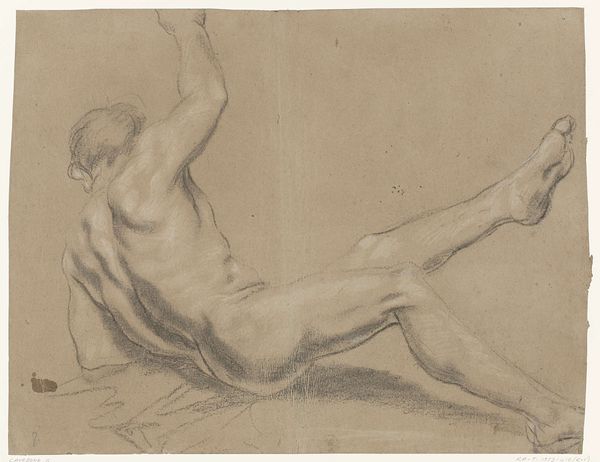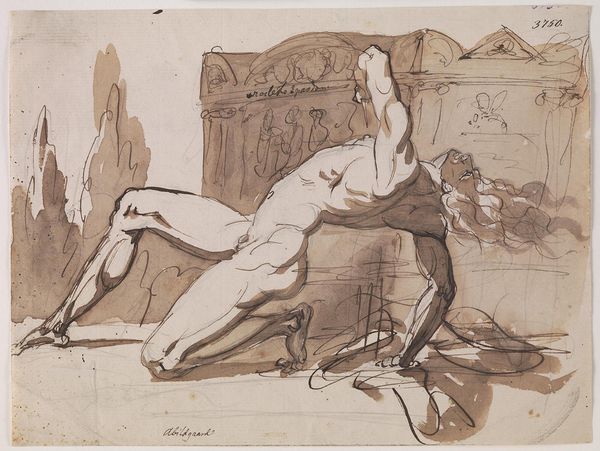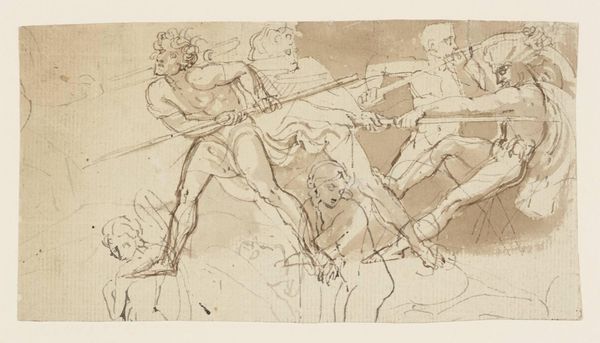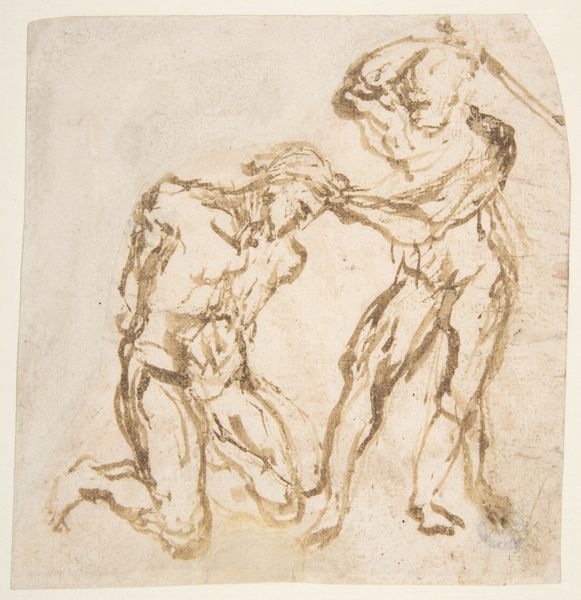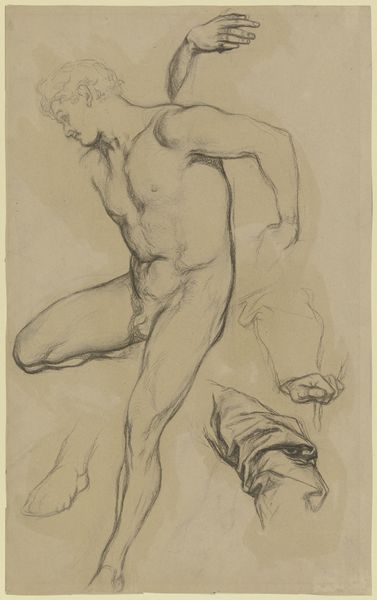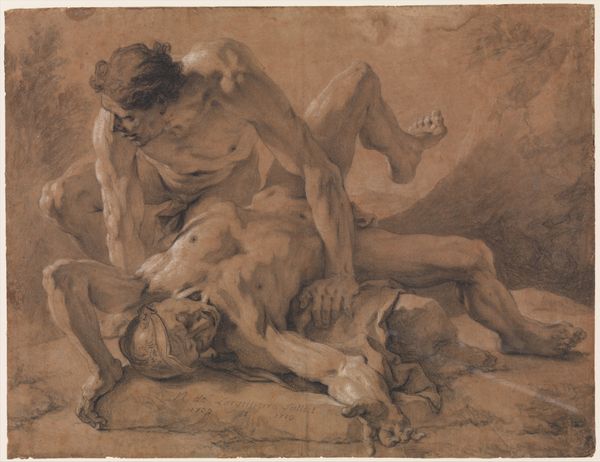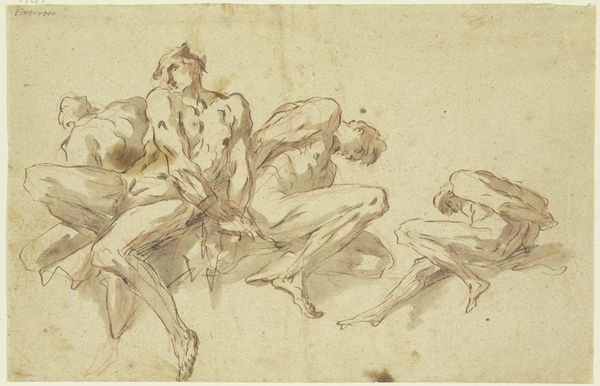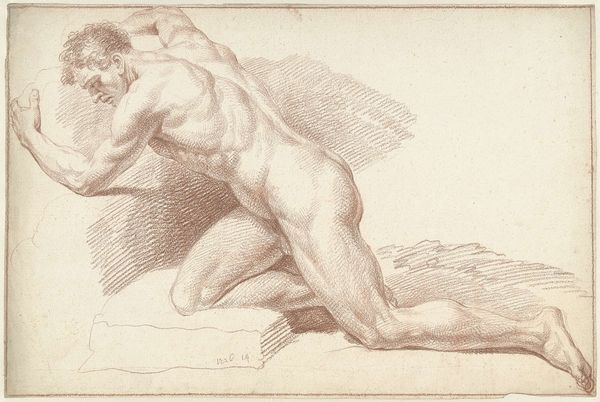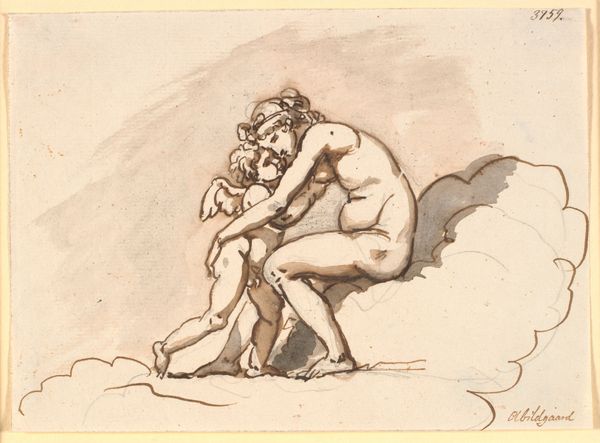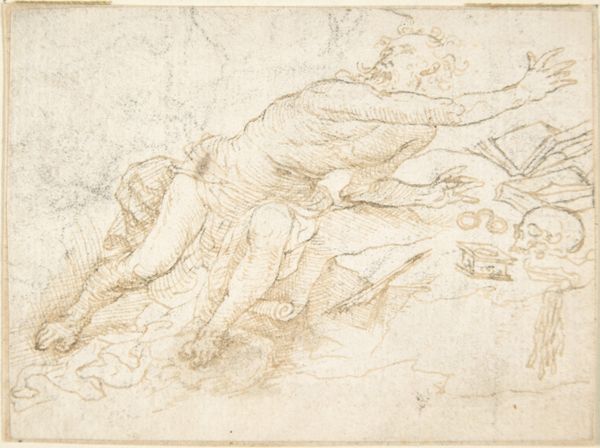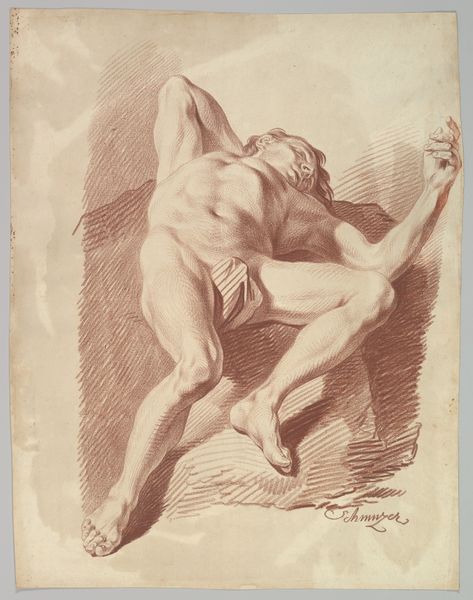
drawing, ink, indian-ink, chalk
#
drawing
#
baroque
#
figuration
#
ink
#
pencil drawing
#
ink drawing experimentation
#
indian-ink
#
chalk
#
nude
Copyright: Public Domain
Editor: So, this is “Two male nudes” by Gaspare Diziani, and it is held at the Städel Museum. The drawing is made with ink, chalk, and possibly some Indian ink on paper. It’s kind of amazing how much information he conveys with so few lines! What are your first impressions, in light of the social context of its creation? Curator: What strikes me immediately is how academic these nudes are, despite their implied setting. They seem positioned for study, likely within the framework of artistic training of the time. This wasn't about celebrating individual bodies, but about mastering idealized forms. Do you see how the poses invite anatomical analysis? Editor: Yes, especially the figure in the foreground. But why two figures, and not just one? Curator: Multiple figures allow for comparison, a chance to showcase variations in musculature and form. Think of academies as places of regulated observation. Also, consider the patrons who supported these institutions: did they perhaps commission drawings like these, and what values or beliefs would that represent? Editor: That's interesting! It challenges the typical image of the lone artist in a studio. So this was more about… structured learning, and less about personal expression? Curator: Exactly! While Diziani's individual skill is evident, the drawing operates within a system that prioritizes standardized knowledge and a certain classicized presentation of the body. How might contemporary audiences respond differently to the "nude" then, versus how they do now? Editor: I guess back then it would be more of a study in form, whereas now we might think more about sexuality or representation… it's pretty fascinating to consider! Thanks for pointing out how context shifts meaning. Curator: Precisely! The "what" of art always exists hand-in-hand with "why," "when," and "for whom." Glad we could unravel some of it.
Comments
No comments
Be the first to comment and join the conversation on the ultimate creative platform.
